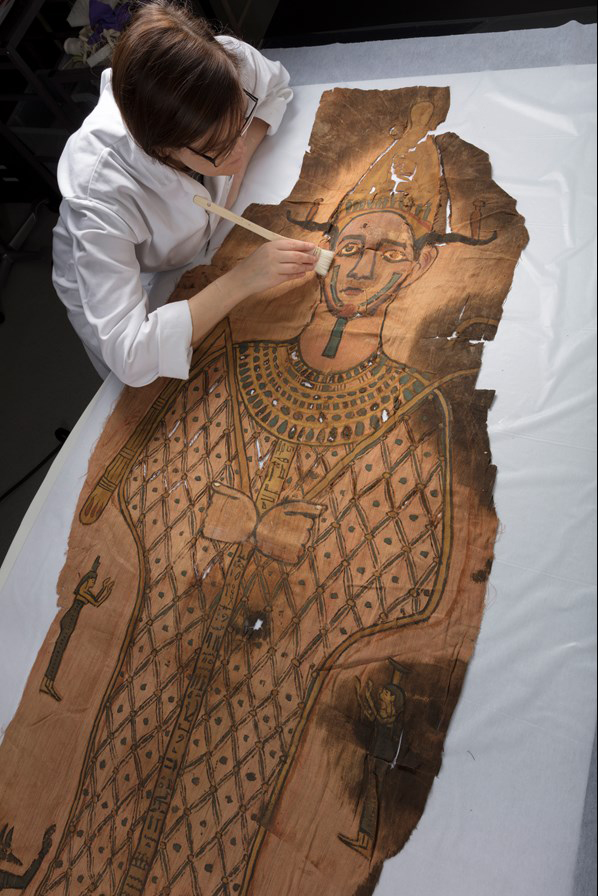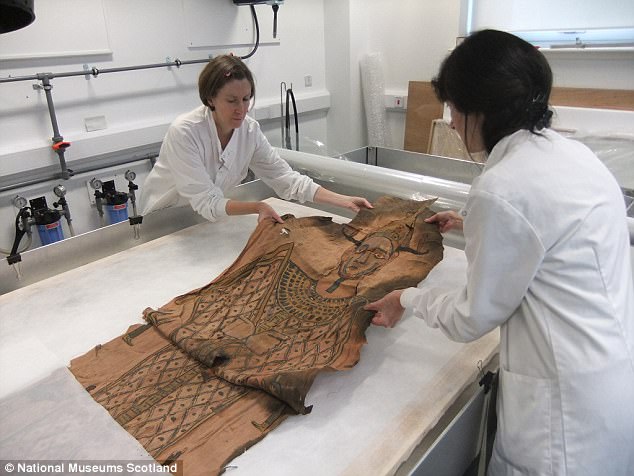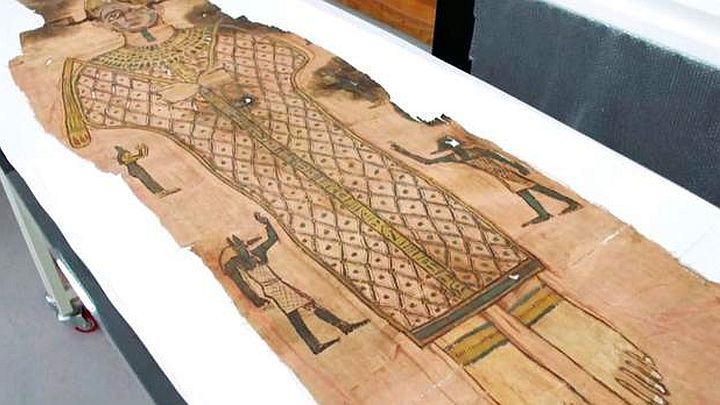In an astonishing turn of events, curators at the National Museum of Scotland uncovered a remarkable piece of ancient history that had been hidden in plain sight for decades. A 2,000-year-old Egyptian mummy shroud, forgotten and wrapped in a brown paper parcel, has been brought to light and will soon be displayed for the public to admire. This extraordinary find promises to offer a new glimpse into the ancient world and the practices surrounding death and burial in Roman-era Egypt.
Discovery of the Shroud

The shroud was discovered by curators while they were meticulously examining the ancient Egyptian collections at the National Museum of Scotland. Wrapped in a brown paper parcel and accompanied by an 80-year-old note from a previous curator, the artifact was in surprisingly good condition. The shroud’s discovery was a serendipitous moment for the team, who were thrilled to find such a rare and well-preserved piece.
Unveiling the Owner
Hieroglyphic inscriptions on the shroud revealed that it belonged to the previously unknown son of the Roman-era high-official Montsuef and his wife Tanuat. This discovery not only provides insight into the individual but also into the broader historical context of Roman-period Egypt. The shroud’s connection to Montsuef and Tanuat, whose deaths were recorded around 9 BC, allows for a precise dating of the artifact, an extraordinary achievement for such an ancient piece.
Conserving the Shroud

Due to the fragility of the ancient textile, conservators took great care in handling the shroud. They gently humidified the fibers to make them less dry and brittle, a delicate process that allowed them to unfold the shroud carefully. This meticulous work took nearly 24 hours, revealing the full length of the painted linen shroud and its intricate details.
A Curator’s Dream
Dr. Margaret Maitland, Senior Curator of Ancient Mediterranean Collections, expressed her excitement and astonishment at the discovery. She described the moment as a curator’s dream, emphasizing the importance and rarity of the find. The shroud’s superb condition and the vibrant, colorful painted details were far beyond what the team had imagined.
Significance of the Shroud

The shroud is a rare object, executed in a highly unusual artistic style that blends Roman period Egyptian art with distinctive characteristics. In ancient Egypt, shrouds were commonly used following mummification, often wrapped around the body before it was placed in a coffin. However, in Roman-era Egypt, the use of coffins became rarer, and shrouds like this one grew in importance.
This particular shroud is unique, with very few parallels from its period. It depicts the deceased as the god Osiris, a powerful symbol of resurrection and eternal life in ancient Egyptian belief.
Historical Context

The shroud comes from a Roman-era burial in a tomb originally built around 1290 BC, opposite the great city of Thebes (modern-day Luxor). Initially constructed for a chief of police and his wife, the tomb was looted and reused multiple times before being sealed in the early 1st century AD. It remained undisturbed until its excavation in the 19th century, when a collection of beautiful objects from various eras was discovered.
Exhibition and Public Display
The shroud will finally go on display for the public at ‘The Tomb: Ancient Egyptian Burial’ exhibition in Edinburgh, opening on 31 March. This exhibition will showcase the shroud alongside other objects from the same tomb, telling the story of its use and significance over a span of 1,000 years.
Conclusion
The discovery of the 2,000-year-old mummy shroud is a remarkable event that sheds new light on ancient Egyptian burial practices and Roman-period Egypt. As this incredible artifact goes on display, it offers the public a unique opportunity to connect with history and explore the mysteries of the past. The exhibition promises to be a fascinating journey through time, revealing the stories of those who lived and died in ancient Egypt.
